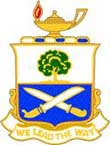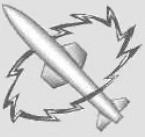eMonticello
Posts: 525
Joined: 3/15/2002
Status: offline

|
Here's what Matloff and Snell said about Torch. The War Planners' choice for landings when the initial plans were drawn up in the winter of 41-42 was in response to a possible German counterattack from Spanish Morocco. They didn't believe that Casablanca port could keep a large army in supply, so they initially planned to wage an offensive airwar to blunt the counterattack.
"On 26 December the planners presented a draft paper on the "Northwest Africa Project," which served to show on what scale the operation would have to be begun, given little or no opposition to the landings and initial occupation and about three months before the Germans could mount a heavy counterattack from Spain. On the critical question of the size of the forces required, the paper was a compromise between American and British views. The American planners estimated the requirements for ground forces during the first three months at a somewhat higher figure than the original British estimate, and the ultimate requirement for both ground and air forces at about three times the figure proposed by the British planners. They compromised on an estimate of requirements for the first three
months of the operation- -six divisions (including two armored divisions), supported by a fair sized air force (385 aircraft), and by heavy antiaircraft defenses (114 heavy guns and 252 light guns) for port and base facilities. The American ground forces taking part would be an amphibious division, an armored division, and an infantry division. The American air units !the main body of the air force) would be two pursuit groups, one medium bomber group, one light bomber group, and one observation group. The British would furnish three divisions, three fighter squadrons (forty-eight planes), and the antiaircraft units. British and American forces would each provide their own service units.
Behind this compromise lay a serious disagreement on the concept of the operation. The British originally proposed using only, one American division (a Marine division), and about four British divisions during the first three months. The Americans originally proposed using during the same period the equivalent of about one British and six American divisions (including one Marine and two armored divisions). The explanation of the difference was that the American planners anticipated, as the British did not, a need for sending land forces into Algeria before the operation was over. The American planners in effect proposed that U. S. forces should carry out the operation in French Morocco and the British forces in Algeria, as the Prime Minister had indicated. They were willing to agree with the British planners that the initial British landing at Algiers should be on a small scale -one armored brigade ; about the same as an American regiment), one infantry brigade group (about the same as an American regiment reinforced), three fighter squadrons, and two antiaircraft regiments. But they anticipated that ultimately the eastward extension of British and American forces from their base on the Atlantic (at Casablanca) would involve large forces. How large, would depend on whether the area to be held would be only the triangle Casablanca-Agadir-Oran, or would include Algeria. Even in the former case, the American planners calculated that a ground force of five infantry divisions and two armored divisions, supported by an air force of seven pursuit groups and six to eight bombardment groups ( including three groups of heavy bombers) would he necessary. On this basis, the American estimate called for transporting over 200,000 men to North Africa as against the 100,000 men required in the British estimate. In case the operation wire extended further eastward to occupy and hold Algeria, the American planners foresaw the need for a force half again as large--about 300,000 men.
The American view, as the Army planning staff explained, was that if "the operation is worth undertaking it should be done in sufficient strength to give a reasonable chance of ultimate success." Although the staff did not regard even the forces in the American estimate as large enough to be certain to hold against the heaviest attack that the Germans might launch, the staff doubted that the Germans considered the area of enough importance to make so heavy an attack, and also pointed out that a force mainly dependent on the Atlantic ports and the rail and road communications therefore could scarcely be much larger.
Although it was impossible to do any practical planning by simply splitting the difference between estimates based on two such different views of the North African project, it was necessary for the planners to agree at once on a tentative estimate for submission to the President and the Prime Minister. They therefore settled on a temporary compromise, whereby they presented- as upper and lower limits-two sets of figures for ground forces and a fairly high estimate for air forces (some 1,400 planes) with a qualification that the size of British and French forces would be "affected by the assistance that may be furnished by French and Spanish units in North Africa." The force was still not large enough, from the American point of view, to achieve the stated objective: "to hold French North Africa against possible German attacks through Spain and Italy and to open the Mediterranean route." But by stating this objective, the planners at least made it clear that the force had to be a large one, particularly in air units, which had to be strong enough to undertake "offensive air operations against Axis bases and ports in the Mediterranean area" on which counterattacks might be based. "
http://www.army.mil/cmh-pg/books/wwii/Sp1941-42/index.htm
_____________________________
Few things are harder to put up with than the annoyance of a good example. -- Pudd'nhead Wilson
|
 Printable Version
Printable Version
















 New Messages
New Messages No New Messages
No New Messages Hot Topic w/ New Messages
Hot Topic w/ New Messages Hot Topic w/o New Messages
Hot Topic w/o New Messages Locked w/ New Messages
Locked w/ New Messages Locked w/o New Messages
Locked w/o New Messages Post New Thread
Post New Thread